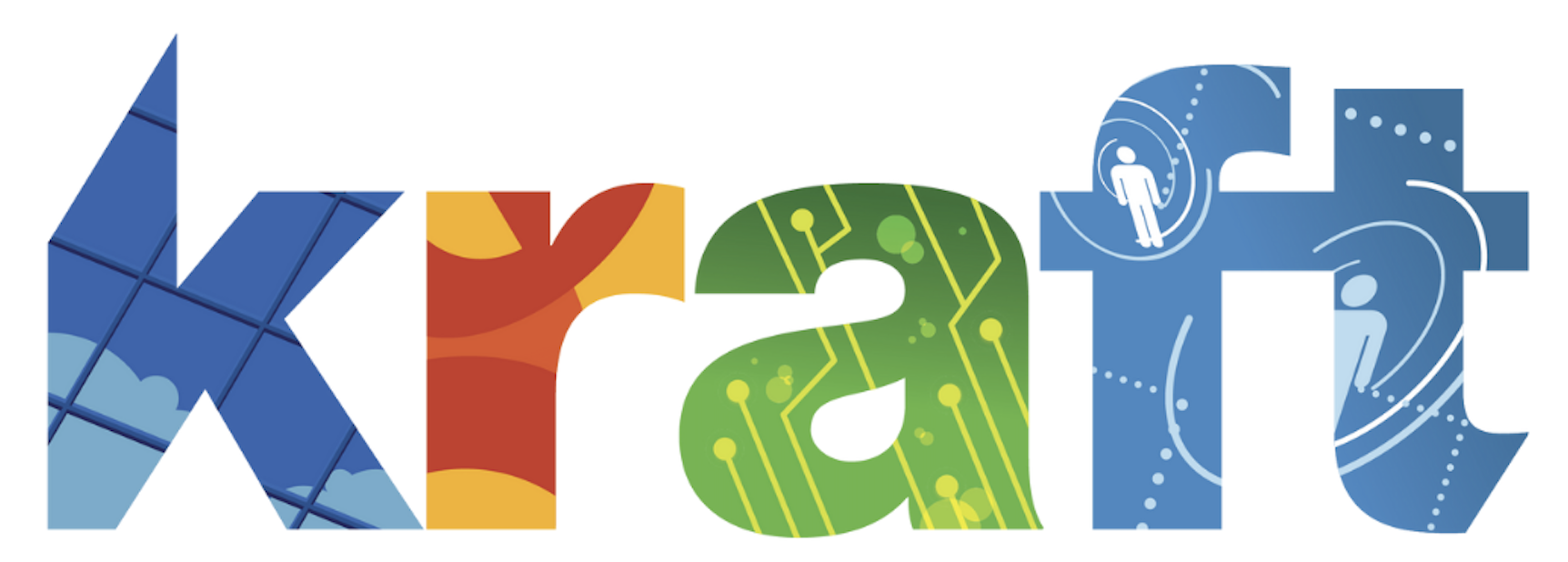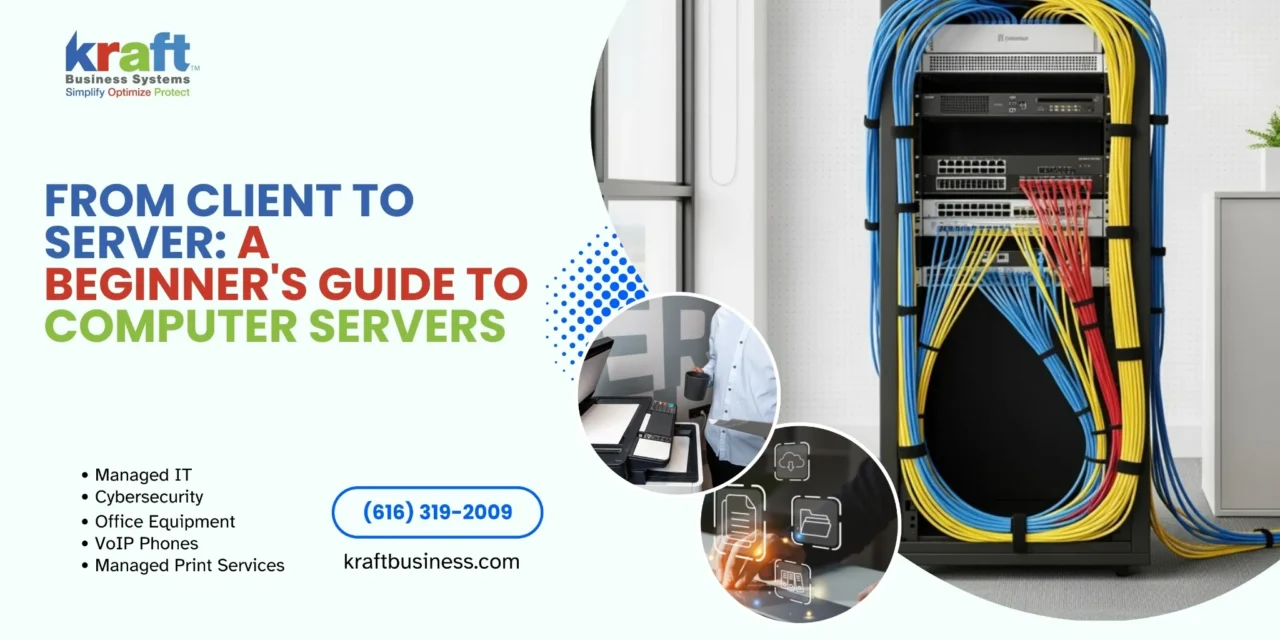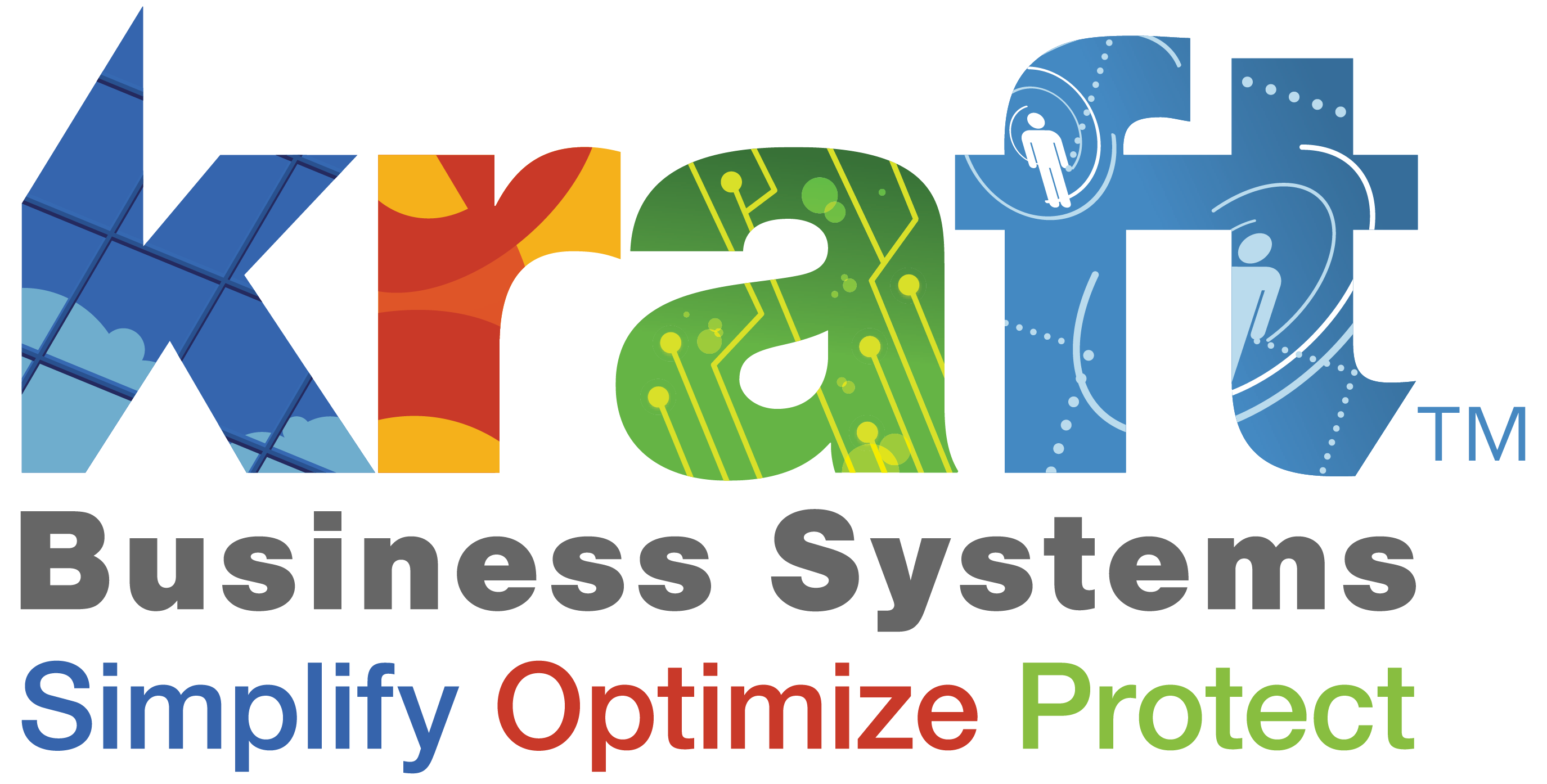Servers for computers are specialized machines designed to provide services and resources to other computers (clients) on a network. Unlike a personal computer (PC) built for a single user, a server is engineered for reliability, continuous 24/7 operation, and handling requests from many users at once.
Think of a server like a restaurant kitchen. It works constantly to prepare and send out meals (data and services) to many customers (clients) simultaneously. Your PC is more like a home kitchen, designed for one family’s needs.
The fundamental difference lies in their design philosophy. A PC is optimized for user-facing tasks like browsing the web or running office applications. A server, however, is built to manage network resources, store data, host websites, and run applications for an entire organization.
Server vs. Personal Computer (PC)
While both are computers, their design and purpose diverge significantly. Here’s a quick comparison:
| Feature | Personal Computer (PC) | Server |
|---|---|---|
| Purpose | General tasks for a single user. | Dedicated services for multiple clients. |
| Processor (CPU) | One CPU, optimized for user experience. | Multiple, powerful CPUs for continuous, heavy workloads. |
| Memory (RAM) | 8-32 GB of standard RAM. | Up to terabytes of Error-Correcting Code (ECC) RAM. |
| Storage | Single or dual drive setup. | Multiple drives in a RAID configuration for speed and redundancy. |
| Power Supply | Single power supply. | Redundant (dual) power supplies for uninterrupted operation. |
| Operating System | User-friendly OS like Windows 11 or macOS. | Specialized server OS like Windows Server or Linux. |
| Uptime | Turned on and off as needed. | Designed to run 24/7/365. |
| Cost | Relatively affordable. | Significantly more expensive due to high-reliability components. |
Server hardware is built for endurance. Components like Error-Correcting Code (ECC) memory automatically fix data errors, and redundant power supplies ensure the system stays online if one power unit fails. This robust construction is why server-grade hardware costs more but delivers the reliability businesses depend on.
Simple servers for computers glossary:
- best server backup solution for small business
- small office network rack
- IT services for small businesses
Servers for Computers: What They Are and Why You Need Them
The Inner Workings: Server Components and Functionality
While a server might look like a large PC, its internal components are engineered for entirely different demands. They are built for 24/7 reliability and handling numerous simultaneous requests. When a user (client) requests information, like loading a website, the server processes this request and sends back the correct data. This client-server model is the foundation of the internet.
Key Hardware Components of Servers for Computers
Servers for computers use industrial-strength components designed for continuous, heavy workloads:
- Processors (CPUs): Servers often use multiple high-performance CPUs (like Intel Xeon or AMD EPYC) to handle massive computational tasks simultaneously, unlike the single CPU in most desktops.
- Server-Grade Motherboards: These are the backbone, supporting multiple CPUs, vast amounts of RAM (up to terabytes), and numerous connections for storage and networking.
- Error-Correcting Code (ECC) RAM: This special type of memory automatically detects and corrects common data corruption errors, which is critical for preventing crashes and maintaining data integrity.
- Storage (RAID): Instead of a single drive, servers use a RAID (Redundant Array of Independent Disks) configuration. This setup spreads data across multiple disks, providing both speed and protection against data loss if one drive fails. Learn more in our guide on Do Small Business Servers Need RAID 5?.
- Redundant Power Supplies: Many servers have two or more power supplies. If one fails, the other takes over instantly, ensuring the server stays online without interruption.
- Network Interface Cards (NICs): Servers are equipped with high-speed NICs, often multiple, to manage heavy network traffic from many clients without creating bottlenecks.
How a Server Interacts with Clients
The request-response model is the simple but powerful process that governs server-client communication:
- A client (your computer) needs a resource, like a webpage. It uses a DNS server to translate the website’s name (e.g., kraftbusiness.com) into a numerical IP address.
- The client sends a request to that IP address over the network.
- The server receives the request, processes it (e.g., retrieves files, queries a database), and prepares a response.
- The server sends the response back to the client, which your browser then displays.
This entire cycle happens in milliseconds. For a deeper dive, check out this Introduction of Server.
Common Server Operating Systems
Servers run specialized operating systems built for stability, security, and managing network services. Unlike desktop OSs, they often operate without a monitor or keyboard (headless operation), managed remotely.
- Linux: Distributions like Ubuntu Server and CentOS are popular for their stability, security, and open-source nature. They are typically managed via a command-line interface (like SSH).
- Windows Server: This OS offers a familiar graphical interface and strong integration with other Microsoft products, making it a common choice for businesses in the Windows ecosystem.
Understanding the Different Types of Servers for Computers
The term “server” covers a wide range of specialized machines, each designed for a specific function. While all servers for computers provide resources to clients, understanding the different types is key to appreciating modern IT infrastructure.
[LIST] of Common Server Types and Their Roles
Here are some of the most common server types:
- Web Server: Stores and delivers website files (HTML, CSS, images) to your browser. Popular examples include Apache and Microsoft IIS.
- Mail Server: Manages the sending, receiving, and storing of emails using protocols like SMTP, POP3, and IMAP.
- File Server: Provides a central location for storing and sharing files across a network, enabling collaboration and easy backups.
- Database Server: A powerful system dedicated to storing, retrieving, and managing data in a database. Applications query this server to access information.
- Application Server: Hosts the business logic for applications, allowing many users to access software without installing it on their own machines.
- DNS Server: The internet’s phonebook, translating human-friendly domain names (like
google.com) into computer-readable IP addresses. - Proxy Server: Acts as a gateway between users and the internet, often used for security, content filtering, and improving performance by caching content.
- Game Server: Hosts multiplayer video games, managing the game world and player connections in real-time.
- Print Server: Manages and queues print jobs for multiple users sharing one or more printers.
Ensuring your data is secure, no matter the server type, is paramount, which is why we offer solutions like those discussed in Best Backup Server Solutions.
The Relationship Between Servers, Virtualization, and the Cloud
The concept of a server has evolved with virtualization and cloud computing.
- Physical Servers: These are the tangible hardware—the machines in a data center or office closet. They provide the raw computing power.
- Virtualization: This technology allows a single physical server to run multiple, isolated “virtual servers” or Virtual Machines (VMs). A software layer called a hypervisor manages these VMs, each acting like a separate computer. Virtualization dramatically improves hardware utilization, offers flexibility, and reduces costs by consolidating workloads onto fewer physical machines.
- Cloud Computing: This is essentially using someone else’s servers, accessed over the internet. Instead of buying and managing your own hardware, you rent computing resources from a provider like Amazon Web Services (AWS), Microsoft Azure, or Google Cloud. This model, built on virtualization, offers incredible scalability and a pay-as-you-go pricing structure. Cloud services are often categorized as:
- Infrastructure as a Service (IaaS): Renting basic computing infrastructure (virtual servers, storage, networking).
- Platform as a Service (PaaS): A ready-made environment for developing and deploying applications.
- Software as a Service (SaaS): Using a complete application hosted by a provider (e.g., Gmail, Salesforce).
The global computer server market reached a valuation of $94.91 billion in 2022 and is estimated to climb to $100.39 billion in 2023, highlighting the immense investment in these foundational technologies. Physical servers enable virtualization, which in turn powers the cloud. Understanding this relationship is key to modern IT Infrastructure Management.
Servers for Computers: What They Are and Why You Need Them
Key Considerations for Your Server Infrastructure
Choosing and managing the right server infrastructure is a critical business decision. It impacts your efficiency, security, and ability to grow. The key is to align your server strategy with your specific business goals.
On-Premise vs. Cloud: Choosing Your Servers for Computers
One of the first decisions is where your servers for computers will live.
- On-Premise Servers: These are physical servers you own and operate at your own location.
- Pros: Complete control over hardware and data, potentially better performance for local applications, and can be more cost-effective long-term for stable workloads.
- Cons: High upfront cost, and you are responsible for all maintenance, security, power, and cooling.
- Cloud Servers: These are virtual servers you rent from a provider and access over the internet.
- Pros: High flexibility and scalability, no upfront hardware costs (pay-as-you-go), and the provider handles all physical maintenance and security.
- Cons: Can become more expensive over time, and you have less direct control over the underlying hardware.
- Hybrid Cloud: Many businesses use a mix of both, keeping sensitive data on-premise while using the cloud for scalability and disaster recovery. This approach offers a balance of control, flexibility, and cost.
The right choice depends on your budget, security needs, and growth plans. It’s a complex decision that often benefits from expert consultation to find the Perfect Server for Business.
Security and Management Best Practices
Whether on-premise or in the cloud, securing and managing your servers is paramount.
- Physical Security: For on-premise servers, lock the server room and use surveillance.
- Network Security: Use firewalls to control traffic and intrusion detection systems to monitor for threats.
- Regular Updates: Keep the operating system and all software patched to protect against known vulnerabilities. This is one of the most critical security tasks.
- Strong Access Controls: Enforce strong passwords and multi-factor authentication (MFA). Grant users only the minimum access they need to do their jobs (the principle of least privilege).
- Backup and Disaster Recovery: Regularly back up all data to a separate, secure location. Test your recovery plan to ensure you can restore operations quickly after an incident.
- Remote Monitoring: Use remote management tools (like SSH, PowerShell, iDRAC, or iLO) to monitor server health and performance proactively, catching issues before they become critical.
- Environmental Controls: Ensure proper cooling and ventilation for on-premise servers to prevent overheating. Data centers are major energy consumers, so efficiency is key.
Implementing these practices is vital for business continuity. Kraft Business Systems specializes in comprehensive IT Infrastructure Security Solutions.
How Many Servers Does a Business Need?
The right number of servers for computers depends on your specific needs. Consider these factors:
- Workloads: What services will you run? (e.g., file sharing, website, database, email). Each may require its own dedicated resources.
- User Count: How many people will access the servers simultaneously? More users require more power.
- Application Requirements: Check the software vendor’s recommendations for CPU, RAM, and storage.
- Data Growth: Plan for your data storage needs now and in the future.
- Redundancy: Do you need a second server for failover to prevent downtime? For critical operations, this is essential.
- Virtualization: Using virtualization can reduce the number of physical servers by running multiple virtual servers on a single machine.
A small business might start with one server, while a larger enterprise may need a complex network of specialized servers. We can help you determine How Many Servers Does a Small Business Need?.
Frequently Asked Questions about Computer Servers
When we talk with business owners about servers for computers, a few key questions always come up. Here are the answers to the most common ones.
What is the main function of a server?
A server’s main function is to manage network resources and respond to requests from other computers, known as “clients.” It acts as a central hub for storing data, hosting websites, managing email, or running shared applications. By centralizing these resources, servers improve efficiency, security, and collaboration for a business.
Why are servers always left on?
Servers are left on 24/7 to ensure that the services and data they host are always available. Business operations, websites, and remote access depend on this constant uptime. Shutting a server down would be like closing your business to customers and employees outside of office hours. Modern servers are built for continuous operation, and frequent power cycles can actually cause more wear on components than leaving them running.
What is a server rack?
A server rack is a specialized frame designed to house and organize server hardware, networking equipment, and other IT hardware in a compact, organized, and secure manner. By stacking equipment vertically, racks save valuable floor space. They also improve airflow for cooling, simplify cable management, and make it easier for technicians to access and maintain the hardware. For more on this, see our guide to a Small Office Network Rack.
Conclusion
Understanding servers for computers is key to understanding the technology that powers our digital world. From hosting websites to managing company data, servers are the reliable workhorses operating behind the scenes.
The key takeaway is that servers are not just powerful PCs; they are specialized systems built for continuous, shared use. Whether you choose an on-premise server for maximum control or leverage the flexibility of the cloud, your server infrastructure is the backbone of your business operations.
At Kraft Business Systems, we help businesses across Michigan, from Grand Rapids to Detroit, design and manage the right server solutions for their unique needs. The technology landscape is always changing, but the need for a secure, reliable, and scalable server foundation remains constant.
If you’re ready to build or upgrade your IT infrastructure, you don’t have to do it alone.










